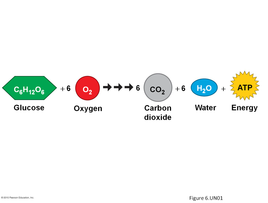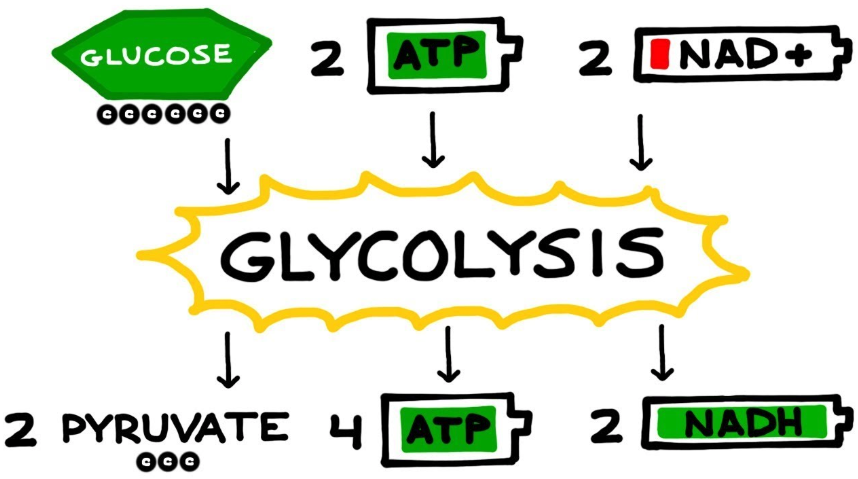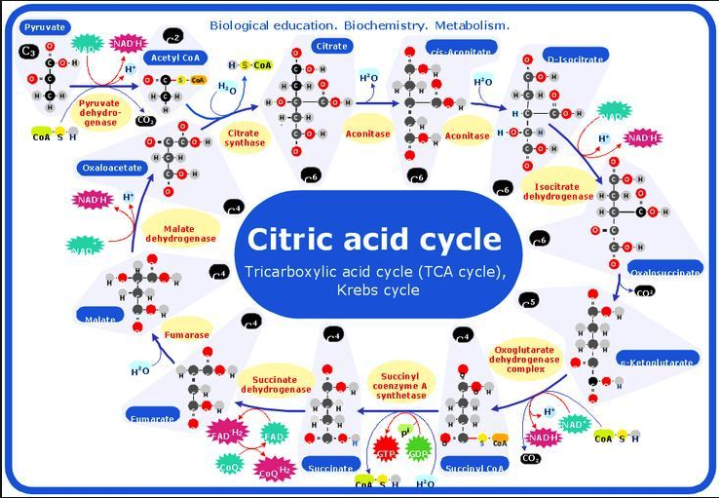by Tiffanie Branch
What is Cellular Respiration?
Cellular respiration is defined as the conversion of fuel into energy and nutrients within the mitochondria and cytosol of cells. This series of biochemical reactions is also called a “metabolic pathway.” Two types of cellular respiration exist: aerobic, or respiration in the presence of oxygen, and anaerobic, or respiration without oxygen.
Cellular respiration occurs within the cytoplasm of prokaryotic cells, but within the mitochondria of eukaryotic cells.
Aerobic respiration requires oxygen as a reactant, and creates energy more efficiently than anaerobic respiration. It produces between 36 and 38 molecules of adenosine triphosphate (ATP), six molecules of water, and six molecules of carbon dioxide.
To understand aerobic respiration, think of what happens when we eat and breathe. We take in food, which breaks down with glucose for our cells to use. Breathing gives our bodies the oxygen necessary to convert that glucose into energy. Our bodies expel the leftovers from the process as water, carbon dioxide, and energy. The expressed chemical equation for this interaction can be defined as:

What Is Aerobic Respiration?
Aerobic respiration is comprised of three major steps:
1. Glycolysis
2. The Citric Acid Cycle
3. Oxidative Phosphorylation
During glycolysis, glucose breaks down into two pyruvate molecules. This requires two reduced nicotinamide adenine dinucleotide molecules (NAD+) and two ATP. The products of glycolysis result in two pyruvate molecules, two oxidized nicotinamide adenine dinucleotide molecules (NADH), and four ATP (which is a gain of two ATP). This part of the process takes place in the cytosol of the cell. For further information concerning glycolysis and aerobic respiration, our biology tutors can help you out.

The citric acid cycle, also known as the Krebs cycle, represents the second step of aerobic cellular respiration. One pyruvate from glycolysis oxidizes into acetyl coenzyme A (acetyl CoA) within the mitochondrial matrix. This part of the process is called a “cycle” since just one molecule of pyruvate completes the cycle. With two pyruvates produced, the cycle begins again. The double cycling yields two ATP, as well as NADH and oxidized flavin adenine dinucleotide (FADH2).

The third and final step, oxidative phosphorylation, takes place in the inner mitochondrial membrane. Some textbooks might refer to this as the electron transport chain. NADH and FADH2 are electron carriers. They use those electrons, as well as oxygen, to convert adenine diphosphate (ADP) to ATP. While this happens, NADH creates hydrogen gradient when the NADH loses its hydrogen, thus making it NAD+. This allows it to be reused in glycolysis. The products of this are NAD+, H2O, and 32 to 34 ATP.
What Is Anaerobic Respiration?
The second type of cellular respiration, anaerobic respiration, contains two steps.
Glycolysis occurs the same way it does in aerobic respiration. Biologists describe the second step as fermentation, which results in alcohol. The alcohol derives from pyruvate produced by glycolysis, and can ferment into either ethanol or lactate (lactic acid). Anaerobic respiration only yields two ATP, and the entire two-step process takes place in the cytosol. Yeast involves this form of respiration to help make wine and other alcohols. It also occurs during exercise as lactic acid builds up in muscles due to low oxygen supply.
Summary
Cellular respiration comes in two forms: aerobic and anaerobic. Aerobic respiration goes through glycolysis, the citric acid (Krebs) cycle, and oxidative phosphorylation (the electron transport chain). Anaerobic respiration goes through glycolysis and fermentation. Aerobic respiration occurs with greater efficiency producing 36-38 ATP, while anaerobic respiration only produces 2 ATP.